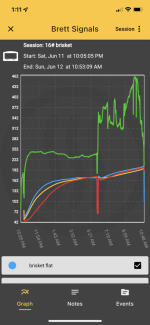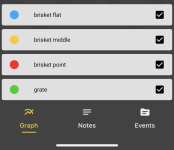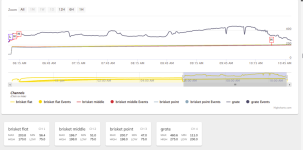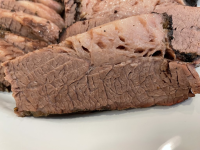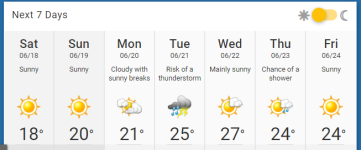Brett-EDH
TVWBB Olympian
At least you had the best piece of the brisket, the mid section.Looks great man....its satisfying when the dinner guests have really had nothing that good before....happens sporadically and its good fun when it does.
Mine had similar color this weekend....my selection on the cut was off though.
I actually had a 12 pound " piece " of brisket and it was a mid section....so a tad bit of the flat and a goed size hunk of the point.
The bad part was it had all that diagonal fat running through it......the whole cut had mega fat in it, the fat where you would separate the 2 muscles if one was to cook them individually. I trimmed a lot off, and cooked it as is, started at 6 am.....came out like good brisket beef, just had to watch for some of the fat here and there.
I always like to buy a full packer and cut off and save the beef trimming for burger (blend). This way you decode how your brisket will cook; shape and size.
And I've learned to upsize my packer purchase due to only getting around a 60-65% yield of the original packer weight (fat trim and shrinkage during the cook). It went on the grill as a 16# and came off with around a 13 pounder. We were 9 people for dinner and only had around 20-24 slices leftover.
For serving, I like to separate the flat and point. This way I can slice out that sheet of fat that doesn't render during the cook. And get nice slices of flat and point, and since the grain changes at the point, slicing the point is easier too.
Try an overnighter if you get a chance with a larger packer. By far, this was the easiest cook I've done in many years. Literally, a set it and forget it type of cook, and was able to grab a solid ~7 hours or so of sleep.
I also found that the long rest after the cook was key to the brisket settling down. My slicing temp was 127 and it allowed for even slices without the brisket shredding from the knife.
How long did your cook go at that size? Hopefully you have some leftovers for sandwiches and more. Sadly, my kids were eating brisket and beans for breakfast today so I might only see a little leftover for dinner. So it goes. I've gotten used to my vultures eating leftovers. At least they're eating good food and not fast food.

